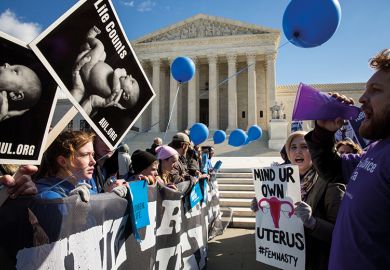The Oxford English Dictionary has an unrivalled global stature as the go-to reference work for the English language, and generations of scholars have had its dependability instilled in them.
The idea for this massive dictionary was conceived in 1857, and the first edition was completed in 1928. A second edition, published in the 1980s, added new material, but it is only in the past 20 years that a major revision of the entire work has begun, with an eye to a third edition that might never appear in hard copy.
That process runs in tandem with the addition of new material. As a result, the current online version of the dictionary is a patchwork of fully updated entries and others awaiting editorial attention.
The reputation of such a cultural icon as the OED hinges on the rigour and objectivity of its editorial processes. But its authoritativeness has always been subject to the social mores of the day, and what was once current can rapidly become not only outdated but offensive, too.
We are an academic and an OED editor, and we met at a conference where the former gave a talk on the literary and cultural history of the vagina. The talk took issue with the unmistakable note of contempt in the first OED edition’s definition of clitoris: “The homologue of the male penis; present, as a rudimentary organ, in the females of many of the higher vertebrates.”
“Would the sky really fall in,” the audience was asked, “were the penis to be described as ‘The homologue of the female clitoris; present, as a rudimentary organ, in the males of many of the higher vertebrates’?”
So began months of collaboration with the OED team on coming up with new definitions. The clitoris, for example, is now: “The female genital organ located in the anterior part of the vulva, which contains numerous nerve endings and plays a major role in sexual arousal and pleasure in women.” And the most recent OED online update includes an intriguing group of words: names for, and terms relating to, the female genitals.
It would be an understatement to suggest that entries such as vagina, as well as more recondite terms (vaginated, vulviform and clitoridectomy) pose an interesting challenge for modern editors. That is not least because the OED aims to show as accurately and fully as possible the way a word is used, from its first entry into the English language up to the present day. It never comments on how a word should be used, and if a term is employed in a way that is derogatory to a certain group, the OED must reflect that.
Having said that, it is also the job of today’s lexicographers to redress the cultural bias portrayed in earlier editions. This issue is particularly acute in the case of female sexuality, which has long been viewed with a mixture of fear, disgust and salaciousness.
It is not only the definitions but also the quotation evidence that must be addressed. The OED’s Emily Gray commented on “how difficult it was to find any evidence of women referring to their own bodies. The vast majority [of evidence] was in medical texts, which either treated female anatomy as something alien that needed to be discovered by objective male examination, or described it in a state of disease or rupture. Or both.”
There’s a tension, then, between the OED’s duty to reflect apparently misogynist usages and definitions, and the role of the researcher to seek out examples that recontextualise and diversify the evidence. The missing element of female pleasure has now been added to the entry, based on up-to-date evidence: “2010 Cosmopolitan Every inch of the labia, vulva and clitoris is filled with a gazillion tingly nerve endings.”
No concept captures the fear of female sexuality better than the myth of the “vagina dentata”, or toothed vagina. While most of the quotation evidence for this entry describes the horror associated with this symbol, a modern quotation added during the revision process mocks and debunks it in a woman’s words: “2013 G. Kaplan Poison Pill Oh and Percy? What I said about my vagina dentata? No teeth, luv, honest, See you at eight, then.”
There is particular irony about the historic lack of female voices in relation to these terms because women are traditionally thought to be chatty, even loquacious. This is nicely exemplified by the fact that the verb twattle formerly meant to chatter or gossip, giving rise to playful puns in the 17th century, when twat entered the lexicon.
There’s a revealing quotation under the OED’s twat entry that draws an important link between past and present: “1719 in T. D’Urfey Wit and Mirth I took her by the lilly white Hand, and by the Twat I caught her”. This is evidence of “catching” that long predates Donald Trump.
When pussy-grabbing occurs at the level of nomenclature and definition, terms are wrested from women and inscribed by men. It takes collaboration and painstaking work to overturn the prejudices of previous editors and previous generations. But it is well worth the effort: seeking out female voices has consequences that far exceed simply bringing words up to date.
Emma Rees is professor of literature and gender studies at the University of Chester, where she is director of the Institute of Gender Studies. She is author of The Vagina: A Literary and Cultural History (2013). Ellie Stedall is a freelance editor for The Oxford English Dictionary and a literacy intervention tutor for The Children’s Literacy Charity.
POSTSCRIPT:
Print headline: The OED’s vagina dialogue
Register to continue
Why register?
- Registration is free and only takes a moment
- Once registered, you can read 3 articles a month
- Sign up for our newsletter
Subscribe
Or subscribe for unlimited access to:
- Unlimited access to news, views, insights & reviews
- Digital editions
- Digital access to THE’s university and college rankings analysis
Already registered or a current subscriber?








